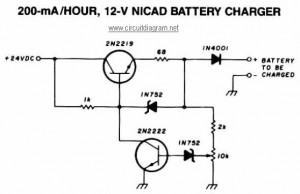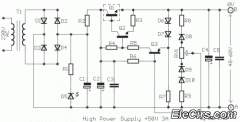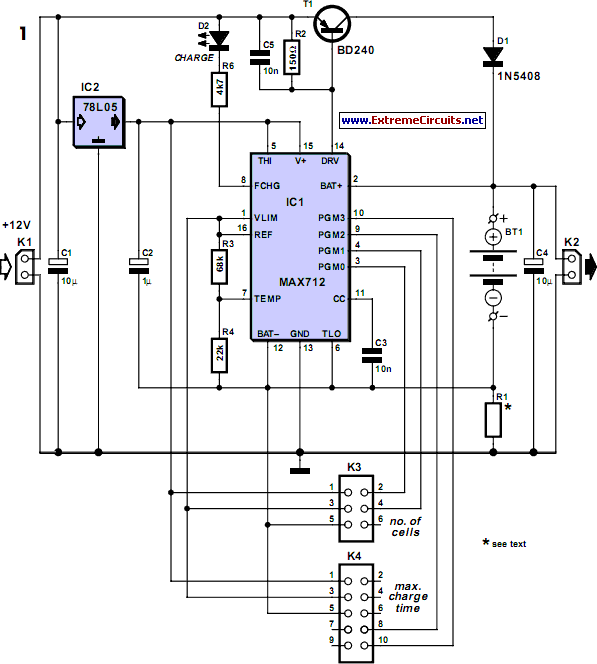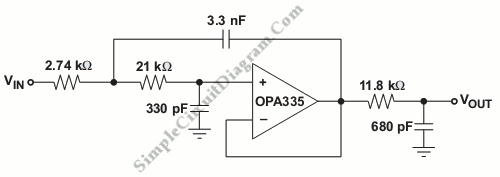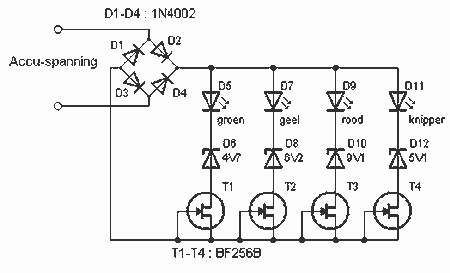
Low Cost Universal Battery Charger
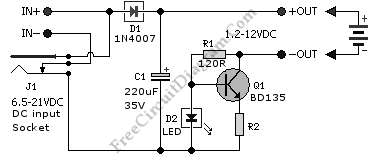
This is a low-cost universal battery charger circuit. This circuit is designed to charge NiCd and NiMH batteries and is ideal for use in vehicles. The circuit converts mains voltage.
The low-cost universal battery charger circuit is engineered to efficiently charge nickel-cadmium (NiCd) and nickel-metal hydride (NiMH) batteries, making it suitable for various applications, particularly in automotive environments. The circuit operates by converting the alternating current (AC) mains voltage into a suitable direct current (DC) output that can be utilized for battery charging.
The primary components of this charger circuit typically include a transformer, a rectifier, a voltage regulator, and charging control circuitry. The transformer steps down the high-voltage AC mains to a lower AC voltage suitable for battery charging. The rectifier, which may consist of diodes arranged in a bridge configuration, converts the stepped-down AC voltage into pulsating DC voltage.
Following rectification, the voltage regulator ensures that the output voltage remains stable and within the safe charging limits of the batteries. This is crucial for preventing overcharging, which can lead to battery damage or reduced lifespan. Additionally, the charging control circuitry monitors the battery voltage and current, allowing for intelligent charging that adapts to the battery's state of charge.
For safety and efficiency, the circuit may also incorporate features such as thermal protection, short-circuit protection, and reverse polarity protection. These features enhance the reliability of the charger, especially in automotive applications where environmental conditions can vary significantly.
Overall, this low-cost universal battery charger circuit offers a practical solution for charging NiCd and NiMH batteries, providing a reliable power source for various devices and applications, particularly in the automotive sector.This is a Low Cost Universal Battery Charger Circuit. This circuit is used to charge NiCD-NiMH batteries and ideal for car use. This circuit transforms a mains. 🔗 External reference
The low-cost universal battery charger circuit is engineered to efficiently charge nickel-cadmium (NiCd) and nickel-metal hydride (NiMH) batteries, making it suitable for various applications, particularly in automotive environments. The circuit operates by converting the alternating current (AC) mains voltage into a suitable direct current (DC) output that can be utilized for battery charging.
The primary components of this charger circuit typically include a transformer, a rectifier, a voltage regulator, and charging control circuitry. The transformer steps down the high-voltage AC mains to a lower AC voltage suitable for battery charging. The rectifier, which may consist of diodes arranged in a bridge configuration, converts the stepped-down AC voltage into pulsating DC voltage.
Following rectification, the voltage regulator ensures that the output voltage remains stable and within the safe charging limits of the batteries. This is crucial for preventing overcharging, which can lead to battery damage or reduced lifespan. Additionally, the charging control circuitry monitors the battery voltage and current, allowing for intelligent charging that adapts to the battery's state of charge.
For safety and efficiency, the circuit may also incorporate features such as thermal protection, short-circuit protection, and reverse polarity protection. These features enhance the reliability of the charger, especially in automotive applications where environmental conditions can vary significantly.
Overall, this low-cost universal battery charger circuit offers a practical solution for charging NiCd and NiMH batteries, providing a reliable power source for various devices and applications, particularly in the automotive sector.This is a Low Cost Universal Battery Charger Circuit. This circuit is used to charge NiCD-NiMH batteries and ideal for car use. This circuit transforms a mains. 🔗 External reference
